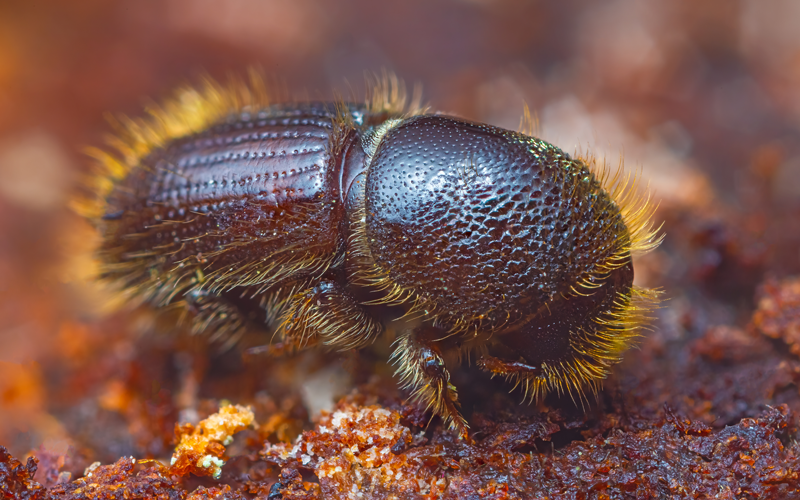
Forestry Commission acting to minimise Ips Typographus damage and spread
The Forestry Commission has implemented targeted measures to mitigate the spread of Ips Typographus, commonly known as the eight-toothed spruce bark beetle. Since its first detection in 2018, 16 areas in southern England have been designated for heightened vigilance. Although the beetle predominantly infests stressed or dying spruce trees, it is also capable of attacking healthy specimens. The adult beetle reaches a size of approximately 5 mm in length and bores into the tree’s bark to create galleries where it attracts mates and deposits eggs. While Ips Typographus is capable of flying distances up to 4 km, long-distance dispersal is primarily facilitated through the movement of live plants or wood-based materials, such as packaging.
The initial demarcation zones encompassed parts of Hampshire, Berkshire, Buckinghamshire, Surrey, Hertfordshire, Greater London, East and West Sussex, Essex, and Kent. As of June 2024, this regulated area has expanded to include Suffolk, Norfolk, Lincolnshire, Cambridgeshire, and Bedfordshire. Within these demarcated zones, restrictions are imposed on timber-related activities to prevent further spread of the pest. Businesses within the regulated area are prohibited from felling or moving spruce timber, bark, or any wood materials, unless they are operating within an approved proactive spruce removal zone and have received prior authorisation from the Forestry Commission.
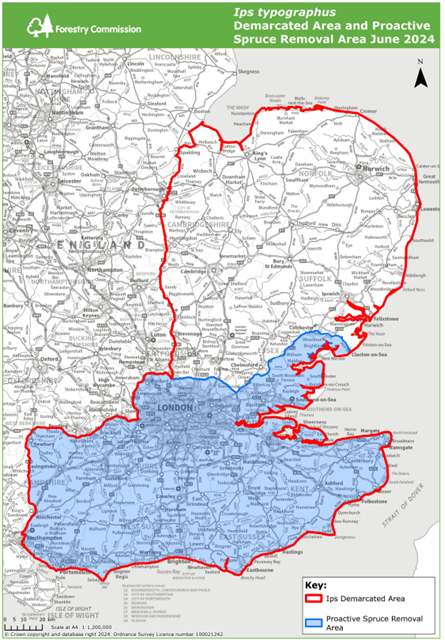
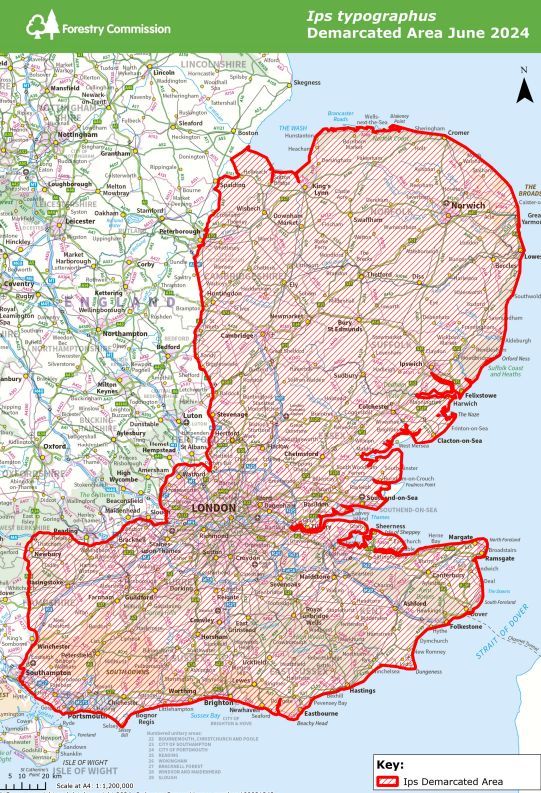
Woodland managers intending to fell or destroy any spruce trees (species Picea A. Dietr.) taller than three meters are required to notify the Forestry Commission in writing. Furthermore, the processing of spruce material originating from the demarcated areas may only occur at facilities that have been specifically authorised by the Forestry Commission. Any spruce materials, including those considered susceptible, must not be left in situ unless explicitly approved by a plant health inspector.
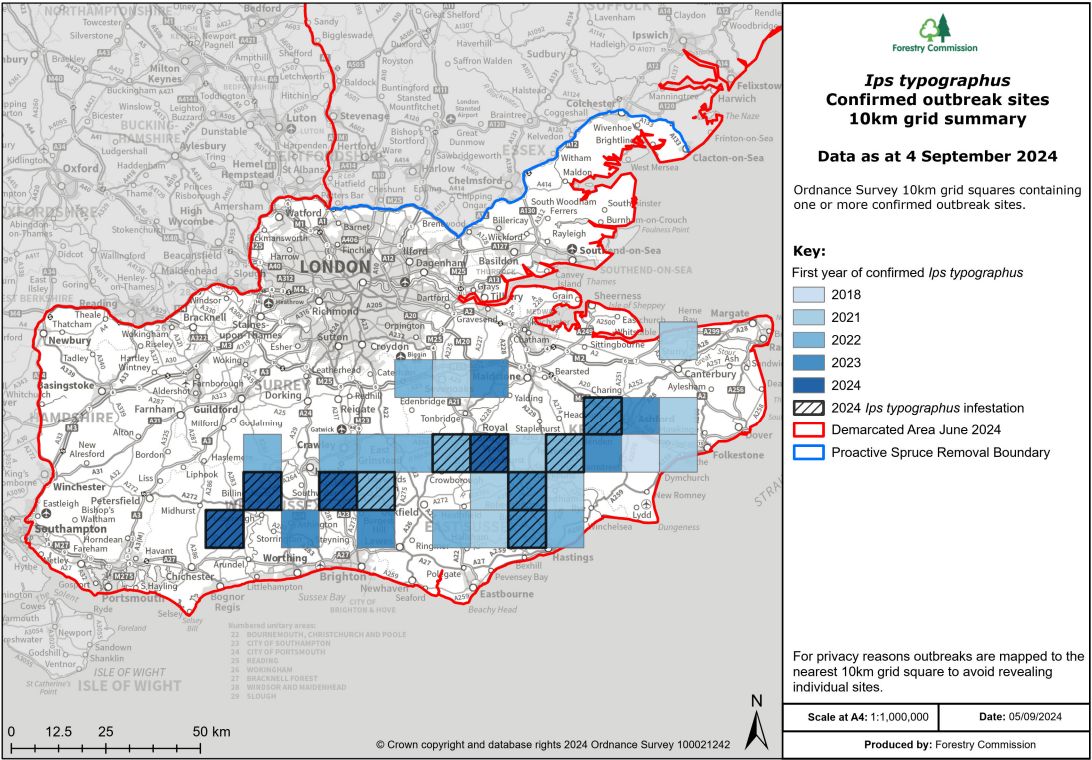
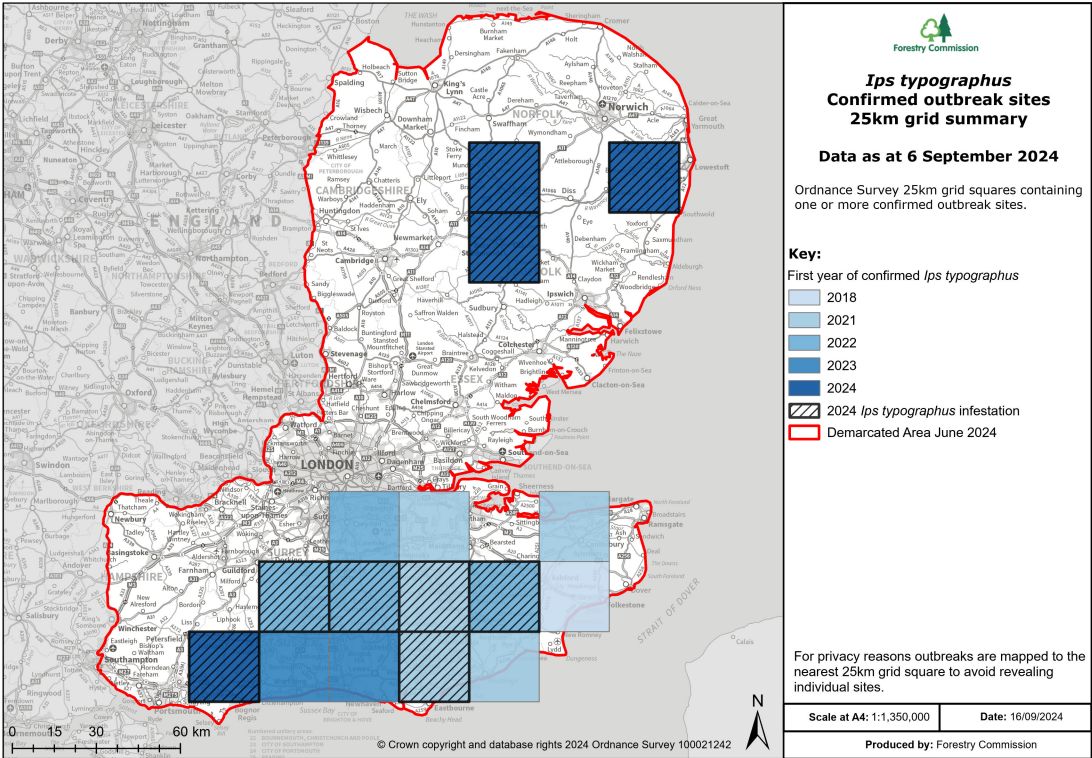
To obtain the necessary permissions for felling, moving, or processing spruce material from within these regulated zones, stakeholders must contact the Forestry Commission.
Forestry Commission spokesperson Andrea Deol said,
"All Landowners, managers and timber processor must remain vigilant and for Ips Typographus. It is important for landowners to continue to check the health of Spruce trees on their land; this is particularly important now we are entering the next flight season."
Landowners and managers issued with a Statutory Plant Health Notice due to an outbreak on their property may qualify for grants to aid in felling and restocking efforts through the Government's Tree Health Pilot Scheme.
If you suspect the presence of Ips Typographus, reports should be submitted via the TreeAlert portal: TreeAlert.
